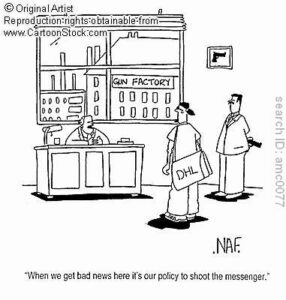MILK & INHALED TOXINS

In my years as an OSH practitioner I have come across a lot of urban myths. Top on that list is the belief that drinking milk neutralizes the effects of inhaled contaminants like dusts, vapours, fumes and mists. Due to the easy buy in by workers, the practice has become so widespread that other prevention measures like engineering controls and Personal protective equipment’s are completely ignored.
The origins of this common practice are many but none has been backed up by scientific research as exposure to lead. The argument has always been that milk being high in calcium reduces lead absorption in the body. This practice was the basis of a research paper titled “The influence of milk intake on the lead toxicity to the sensory nervous system in lead workers”. This research paper noted in part that workers who did not take milk, due to health reasons, had higher blood lead parameters. However, it was observed that the difference was not statistically significant. Despite the focus of research being exclusively on lead exposure, the practice of giving milk to workers has been replicated for all imaginable substances in the workplace.
Furthermore, according to research done by The National Research Council (US), the toxic effects of inhaled chemicals may differ markedly from that which occurs when the agents are ingested. The reasoning is that the target organ of exposure, the lungs, function differently from the stomach in which the intervention (milk) is administered.
Also, the rate of absorption of contaminants through the lungs is significantly higher than through the digestive system. This is due, in part, to the large surface area of the lungs. The digestion process is further slowed down by the presence of other food in the Gastro-Intestinal tract. That is to simply say that the inhaled contaminants will be in the blood stream and in the susceptible organ long before the ingested remedy can “neutralize” them.
When the body is exposed to inhalable toxins, extra mucus is produced as a defence mechanism. This extra mucus drips to the throat through the back of the nose. Granted, there is a short lived relieve felt at the throat after washing down the mucus. However, the soothing effect at the throat attributed to milk can basically be replicated by taking any warm beverage. The milk in this case is a very temporary fix and unless the root cause of the extra mucus is addressed, a chronic respiratory infection is inevitable.
According to the Occupational Safety & Health Act (OSHA 2007), it is the responsibility of the employer to undertake an appropriate risk assessments in relation to the safety and health of persons employed. On the basis of these results, the employer must adopt the preventive and protective measures suggested. All professional OSH practitioners go by the hierarchy of controls from elimination of the hazard through to provision of personal protective equipment to suggest the most appropriate method to prevent chemical exposure.
In the absence of a risk assessment report, employers can refer to the safety data sheets (SDS) accompanying the chemicals in use. The SDS will include information on the physical, health & environmental hazards and the appropriate protective measures against these listed hazards.
The workers too should be sensitized on the facts surrounding this myth to curb ignorance. It is therefore the duty of the employer to inform the workers that milk is at best a free meal that is ineffective in preventing the effects of occupational exposure to inhalants. The workers under OSHA 2007 have the responsibility of complying with the measures put in place by the employer to ensure their health & safety in the workplace.
Also to my fellow OSH practitioners, we have a duty of diligently busting this myth with every opportunity. Armed with the few facts laid out in this article, we can be reasonably confident to sway workers and employers to embrace the more tried and tested control methods.
It is often said that Knowledge is power, however author Tony Robbins points out that knowledge is only potential power. True power lies in taking action based on your knowledge. Have a lactose tolerant day!
Daniel Amol, HSE Consultant







